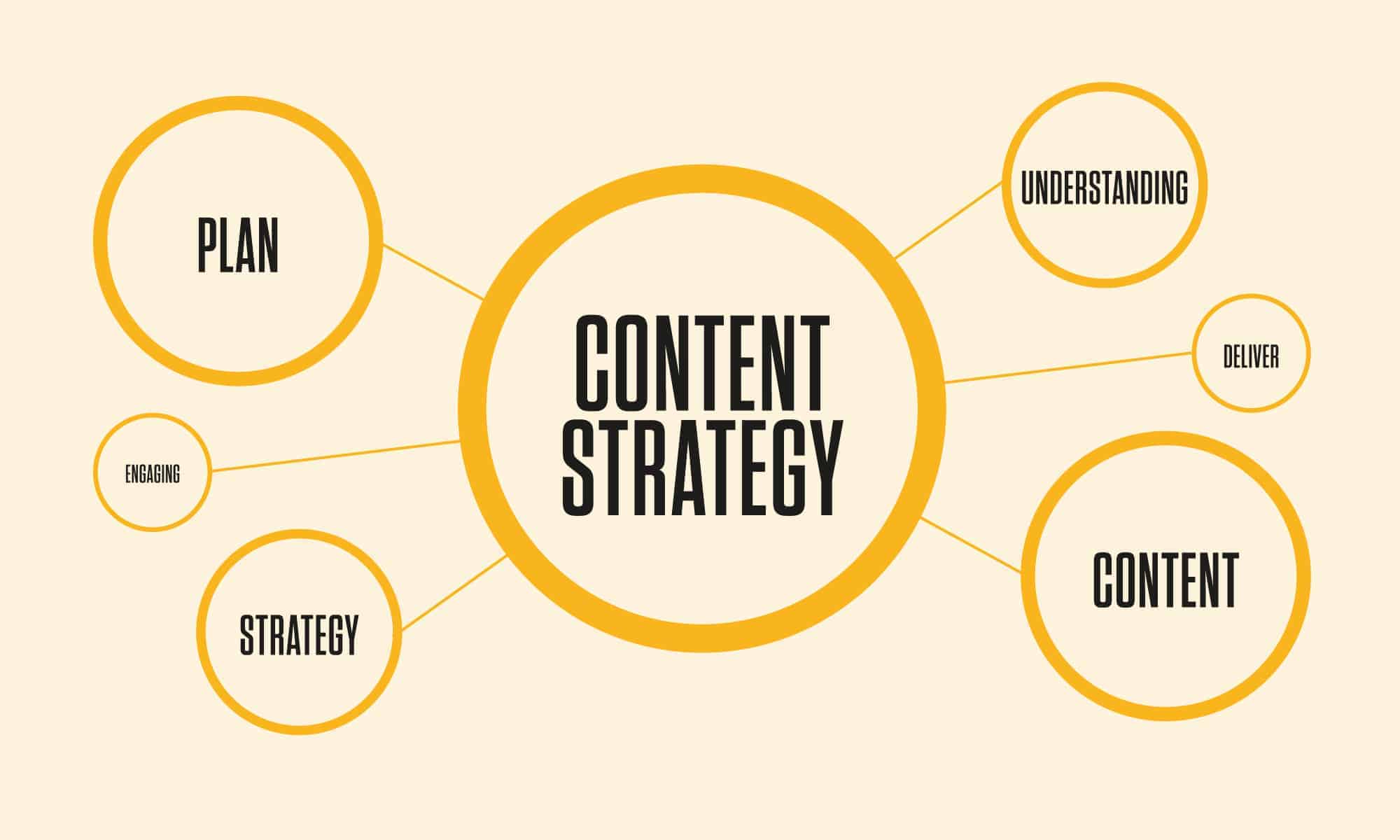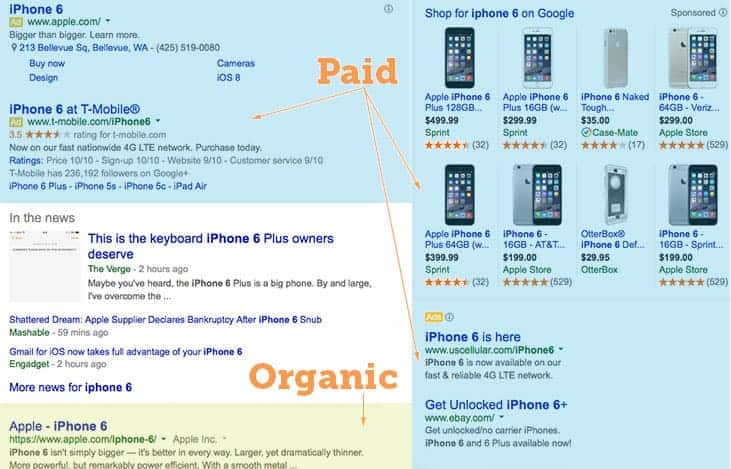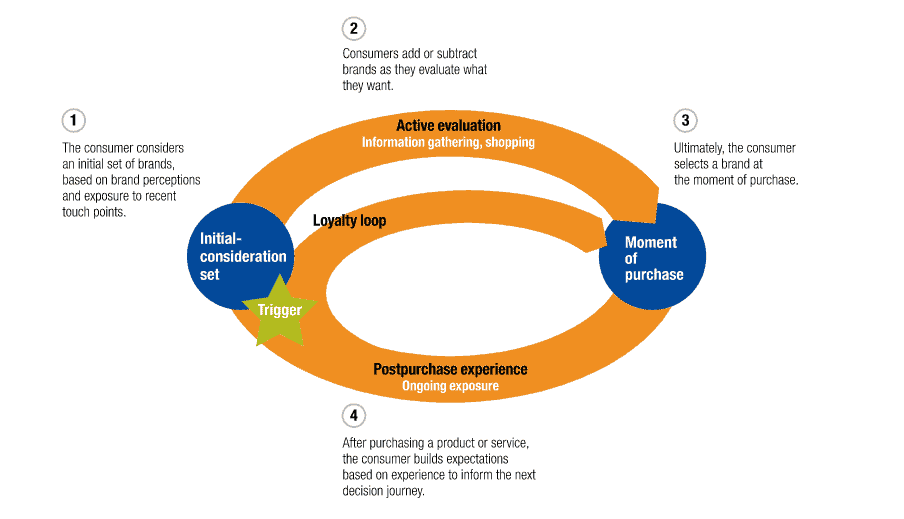Today’s consumer, empowered with more information and choices than ever before, expects more from their brands than just clever ad copy and solid branding.
With an abundance of choices and information, consumers are fastidious when it comes to buying decisions. And all that competition means that gaining market share is harder than ever—especially if you’re up against industry heavyweights.
Consider the fact that in 2010, the average consumer spent three hours researching products before making a purchasing decision. By 2014, that had become six hours. The numbers are only going up.
The good news about this is that all those hours spent researching are also hours that a consumer will spend getting to know your brand—if you can get and keep their attention.
Enter content marketing.
What is content marketing?
Content marketing is a form of inbound marketing—bringing the consumer to your brand, rather than blanketing the airwaves or internet with advertising and hoping some of it sticks. It’s a way to solidify your brand’s voice, as well as to showcase your industry expertise.
This is true whether you’re writing blog posts for your website, or high-level articles from your CEO on industry trends.
The Content Marketing Institute defines content marketing as “a strategic marketing approach focused on creating and distributing valuable, relevant, and consistent content to attract and retain a clearly-defined audience — and, ultimately, to drive profitable customer action.”
That most important adjective there is “valuable.” Valuable content is key. With content marketing, you’re promoting your brand’s value—not your product or service. When a brand’s value is in the spotlight, selling fades into the background. And that’s what today’s consumer wants.
Why should you have a content marketing strategy?
Content marketing helps businesses increase their website traffic, grow brand awareness, generate new leads, and so much more. Even a single blog post can reap enormous benefits for your company. Here are just a few.
- Increases the number of pages on your website for Google to “crawl,” thereby increasing your chances of showing up on the first page of Google results for a given search term
- Can offer potential customers information they need for whatever stage of the buying process they’re in
- Increases the chance that other sites will link back to your site, as others can cite your blog post in their own content
Content marketing is one of the most effective ways to build your brand and define your voice. Customers want to know you’re credible. Credibility and content go hand in hand.

Creating Your Content Strategy
The following steps can help you get started on creating a content marketing strategy to win market share.
- Determine your target audience/audiences
Who are you creating content for? What audiences are you trying to reach?
This is where buyer personas really come in handy.
Using your buyer personas, research what types of content people who fit those personas are consuming.
Browse industry publications, do hashtag searches for relevant topics on social media, use a social media listening tool like Hootsuite, and take a look at the content your competitors are posting.
And of course, if you can get answers straight from your customers themselves, do it! Send out a survey to your existing customers through a tool like SurveyMonkey asking them about the types of content they’re enjoying from your brand, what they’re not enjoying, and what they’d like to see more of.
You can even add in questions that allow them to submit specific content that they like from other brands, which can help guide your development process.
Once you’ve done your persona research, you should have a good idea of the types of content that your audience is consuming. Then, focus on developing two or three types on a regular basis.
No matter what, one of those types of content should be blog articles, posting a minimum of three per week.
Other types of content that your audience might want include:
- Podcasts
- Videos
- Images/quote cards for Instagram
- Blog posts and articles
- Whitepapers
- Ebooks
- Webinars
Whichever types of content you choose to focus on, having a variety of content at your disposal will help you reach and engage your different audiences—not only the people who come to you for different reasons, but who come to you at different stages of the buying journey.
- Answer the question: Why should your target audiences read your content?
Going back to your buyer personas, focus your attention on their pain points. How can your content help resolve your customer’s pain points?
Conduct surveys to find out how your customers found you, what problems they were experiencing before, and how they would recommend your product to a friend.
Pain points will be different depending on your customers and your product or service, of course, but they can be grouped into four broad categories:
- Financial: Prospects/customers need to reduce the amount of money they’re spending on their current product or service
- Productivity: Prospects/customers are spending too much time using a product or service, and want something more efficient
- Process: Prospects/customers want to streamline internal processes or improve business systems (this is important mainly for B2B)
- Support: Prospects/customers need better support at one or more stages of the buying process
Once you’ve identified the pain point (or points) that your brand can solve for them, you can start creating content that helps guide them to you.
Let’s say your brand offers an HR tech solution, and many of your current customers found you because they needed a streamlined way to manage hiring and payroll (a process pain point).
You would then start developing blog posts around that topic. You’ll also want to include keyword research and SEO research in your headline development process, so you ensure that you’re using keywords that will actually bring people to your site.
When you’ve done that keyword research, potential headlines could be things like:
- Three Signs Your Payroll Provider Is Wasting Your Time
- Five Benefits of Cutting-Edge Hiring Software
- Seven Ways HR Software Can Reduce Your Onboarding Timelines
Focus on solving the customer’s problems, and the results will follow.
- Why you?
In other words, why should consumers pick your product or services over competitors?
Use content to differentiate your brand. What makes you the expert?
This is a great place for customer testimonials. Include these on your website, blog posts, and on social media.
Again, always focus on the customer while emphasizing your strengths. Show them how your company will invest in their story and success.
- Which formats will best support your goals?
While blogs and social media posts are critical elements of any content strategy, case studies, white papers, infographics, ebooks, and videos should also be in your content marketing arsenal. You’ll know which formats to invest in first from your customer surveys and buyer persona research.
Blogs, like the one you’re reading right now, work best when they’re updated frequently—aim for three times a week. Again, look to your audience for inspiration on what to write about. Write how you speak, clearly and directly.
Case studies are a great way to show your value by sharing real-life examples of your company helping customers.
Publish stories that your ideal customers can relate to. Use an easy to read format—bulleted lists of results, for example, rather than lengthy paragraphs—and be as specific as possible. We recommend dedicating one page on your website to case studies.
Infographics are great when you have data to share from a recent report or survey. Videos are most likely to be shared on social media above any other type of content.
- Which channels are best for your audience?
Think about which channels are most relevant to your target audience. For example, one brand may have more success reaching consumers on Instagram, while another should focus their efforts on LinkedIn. Be selective—don’t worry about being active on every single channel.
- How often will you post and publish new content?
Or rather, how often can you share quality content?
When formulating your content marketing strategy, it’s important to figure out the management side. Determine who is responsible for what content, where it will be published, and when.
You can’t manage content at random; you need a detailed content strategy. Work out the titles, dates, content type, content status, authors, and so on.
Be sure to keep an inventory of published and posted content, too.
- Use SEO

Keyword research is the bread and butter of content marketing.
It’s how we figure out which topics are trending, timeless, or to be avoided.
Look at the actual words and phrases people are using when they search for information on the web. You can find this out with Google Keyword Planner.
Then, you can see what keywords customers are searching that lead them to your site using a tool like Google Analytics.
By leaning on these keywords, you can create content that will show up on search results.
- Create shareable social media content
The best social media content is shareable social media content. You want your content to drive audience engagement.
Some examples are:
- Videos—product demos, testimonials, funny videos (if that fits your brand), or educational videos
- User-generated content (UGC)—ask your audience to share a video or ask them to send replies to a question. Always include a dedicated hashtag so you can keep track of replies.
- Memes and trending or regular hashtags—#ThrowbackThursday, #MemeMonday, etc. Anything that allows you to hop into a larger, ongoing conversation will be good for your brand’s engagement.
- Create post-purchase content
The customer journey doesn’t stop after you’ve made a sale.
It’s vital to keep the dialogue going. Create content that helps customers best use your products and services. Share creative ways your customers are putting your products to work, or what to do when your product has reached the end of its life (maybe you have a return-and-recycle policy).
This helps build trust and customer loyalty.

- Stay relevant
Content marketing is not immune to the cultural landscape that defines today’s headlines. You can use this to your advantage.
Keep your audience and your customers engaged by using contemporary, inclusive, and energizing content.
Don’t alienate, and find ways to celebrate the energy of progress. We are living in an era of instant and often overwhelming change. Brands that can participate authentically in the important conversations—showing up for their customers to support them, not sell to them—are the ones that will be able to gain greater market share, and hold on to it as time goes on.
- Use evergreen content
Evergreen content is not time-sensitive and continues to be relevant long past its publication.
This type of content is valuable because it can be shared and built on again and again. You can get lots of mileage out of this type of content because once you create it, it can continue working for you indefinitely. Some of the most valuable evergreen content—in Zen’s case, that’s a blog post answering 60 of the most commonly asked digital marketing questions. We first posted it back in 2014, updating regularly as information changes. Throughout the past six years, however, it’s continued to bring people to our site.
The best evergreen content is often in the form of listicles (like that blog post), tips, and how-to content, both written and visual (like videos and infographics). Remember to choose the right keywords, optimize for SEO, and use simple and clear language.
Ready to grab more market share through content marketing? Contact us today to get started.





